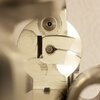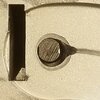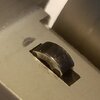was told by a gunsmith that all revolvers will eventually have their frames stretched if enough rounds are shot through them. However, I'm wondering if it has more to do with material, such as aluminum vs steel, or if I shoot only 38 special out of a revolver made for 357 magnum, would that still stretch the revolver frame, it would just take significantly longer?
I've spoken twice to S&W and Ruger. Both S&W reps told me that stretching would affect more the lightweight revolvers than a heavy steel one, but that even in the heavy steel ones and even if shooting light loads rather than heavy hot loads, if shot enough the frame would eventually stretch. However, Ruger said this was an old myth from when revolvers were made from brass, that the new ones don't stretch at all regardless of what you shoot through them, and the second Ruger CS rep said that their frames didn't stretch at all regardless of what you shoot through them because they're heat treated.
So, I was wondering if anyone has any experience with frames stretching with these particular brands? Either Ruger is vastly superior to S&W or Ruger CS reps we're completely truthful?
I've spoken twice to S&W and Ruger. Both S&W reps told me that stretching would affect more the lightweight revolvers than a heavy steel one, but that even in the heavy steel ones and even if shooting light loads rather than heavy hot loads, if shot enough the frame would eventually stretch. However, Ruger said this was an old myth from when revolvers were made from brass, that the new ones don't stretch at all regardless of what you shoot through them, and the second Ruger CS rep said that their frames didn't stretch at all regardless of what you shoot through them because they're heat treated.
So, I was wondering if anyone has any experience with frames stretching with these particular brands? Either Ruger is vastly superior to S&W or Ruger CS reps we're completely truthful?





